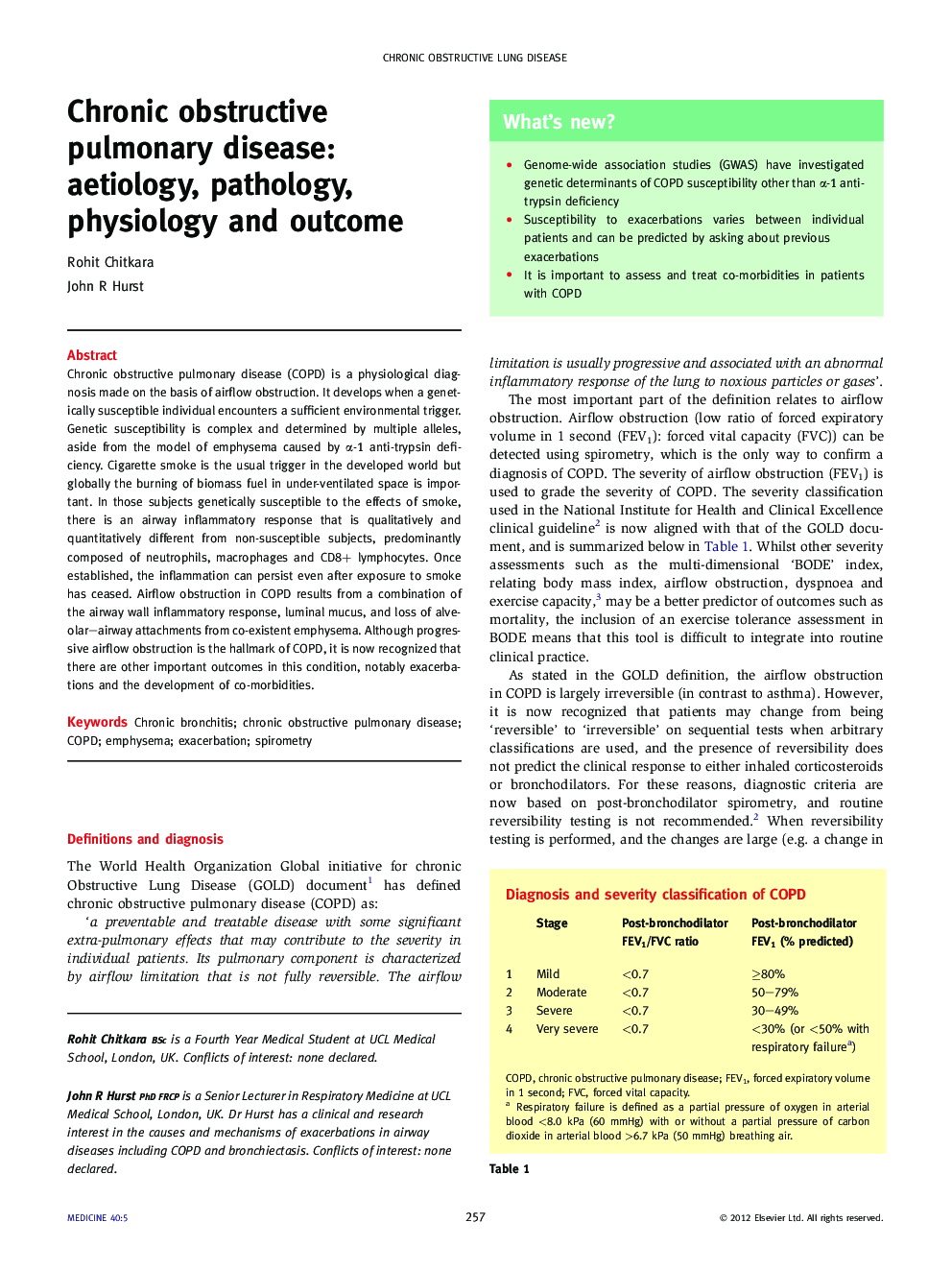| کد مقاله | کد نشریه | سال انتشار | مقاله انگلیسی | نسخه تمام متن |
|---|---|---|---|---|
| 3804811 | 1245118 | 2012 | 5 صفحه PDF | دانلود رایگان |

Chronic obstructive pulmonary disease (COPD) is a physiological diagnosis made on the basis of airflow obstruction. It develops when a genetically susceptible individual encounters a sufficient environmental trigger. Genetic susceptibility is complex and determined by multiple alleles, aside from the model of emphysema caused by α-1 anti-trypsin deficiency. Cigarette smoke is the usual trigger in the developed world but globally the burning of biomass fuel in under-ventilated space is important. In those subjects genetically susceptible to the effects of smoke, there is an airway inflammatory response that is qualitatively and quantitatively different from non-susceptible subjects, predominantly composed of neutrophils, macrophages and CD8+ lymphocytes. Once established, the inflammation can persist even after exposure to smoke has ceased. Airflow obstruction in COPD results from a combination of the airway wall inflammatory response, luminal mucus, and loss of alveolar–airway attachments from co-existent emphysema. Although progressive airflow obstruction is the hallmark of COPD, it is now recognized that there are other important outcomes in this condition, notably exacerbations and the development of co-morbidities.
Journal: Medicine - Volume 40, Issue 5, May 2012, Pages 257–261